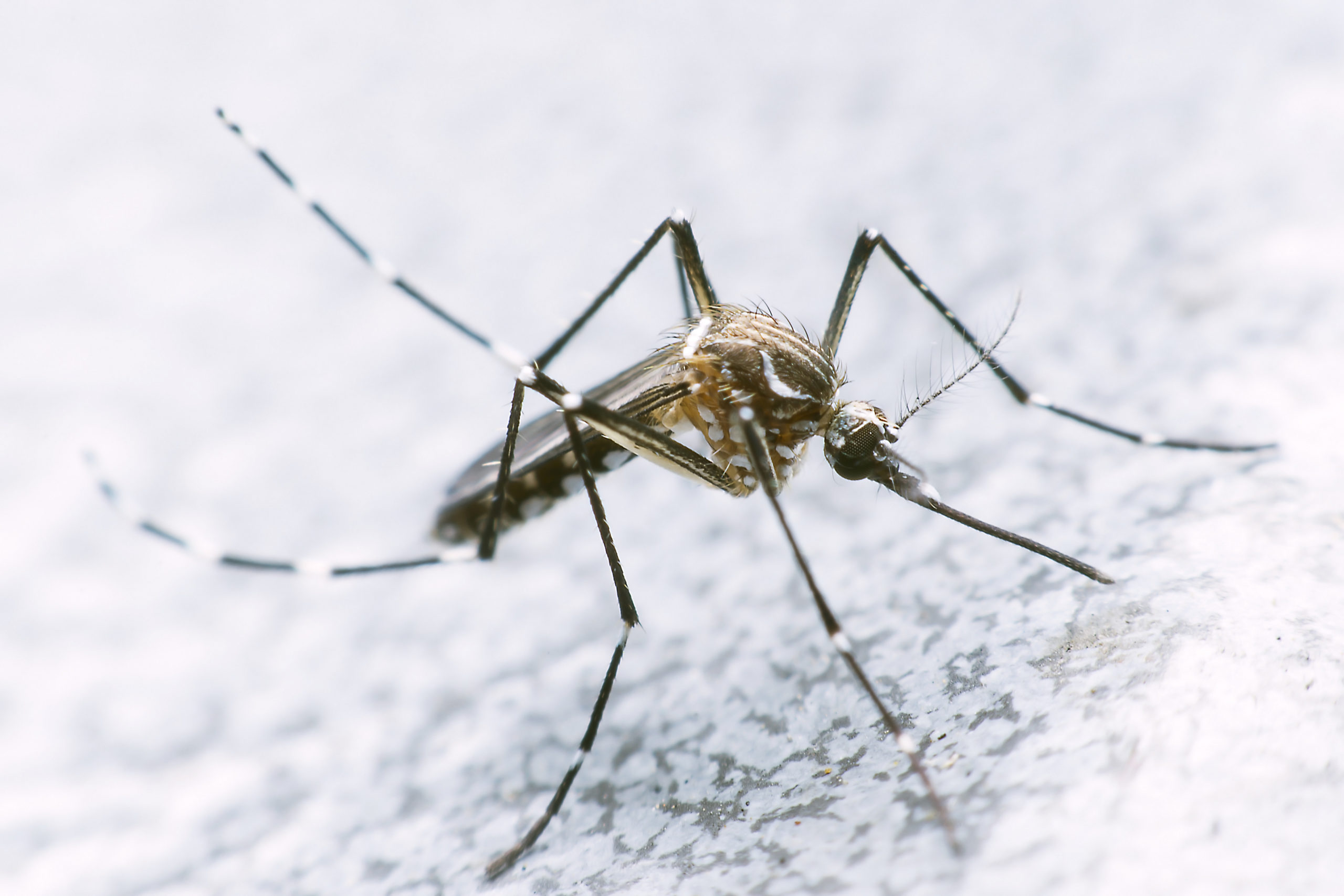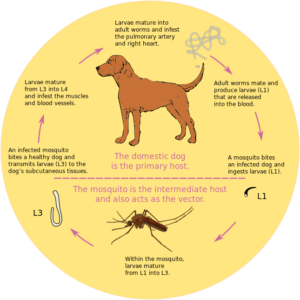What is heartworm disease?
Dirofilaria immitis, more commonly known as heartworm, is a parasitic roundworm that is spread by the bite of a mosquito that has previously bitten a heartworm infected dog. When taking a blood meal, the mosquito ingests larvae from an infected dog, and after some development in the mosquito the larvae are injected into another dog when the mosquito lands and bites to take a meal. The juvenile heartworm larvae must go through intermediate development stages in the mosquito, making it impossible for a dog to be directly infected by another dog. The warmer the weather, the faster the larvae develop. Once temperatures drop below 14 Celsius the cycle is halted which is why we do not administer heartworm prevention during the winter.
Mature heartworms eventually take up residence in the pulmonary artery where they continue to grow. The female worm can reach 30cm in length while the male tends to be smaller. By seven months after infection, the worms will mate and the females will begin giving birth to live young, called microfilariae. Left untreated, early signs of heartworm disease include a cough, especially on exercise, and decreased stamina. Advanced cases will eventually lead to congestive heart failure.
Why do we test annually for heartworm?
Certain heartworm preventatives (milbemycin and ivermectin based products) can cause adverse reactions if administered to a heartworm positive dog. Also, if dogs are tested annually an infection can be detected before it becomes too advanced. The pharmaceutical companies that manufacture the heartworm preventatives often pay for treatment if the product fails to protect a dog from contracting heartworm, as long as the owner had the dog tested at the beginning of the season and properly administered the product.
Who and when do we test for heartworm?
Any dog of any age can, and should, be tested annually. Since it takes 6 months for a pet to develop a positive response on a heartworm test, we recommend that annual testing begin no earlier than 6 months after the end of the heartworm season of the previous year which is usually considered to be October 15th. Puppies born after October 15th do not need a test the following spring. We simply put them on prevention for their first summer and perform a heartworm test the following year.
How do we test for heartworm?
Here at Scott Veterinary Clinic we use Idexx’s Snap 4DX Plus, which also tests for exposure to five tick borne diseases (2 types of Anaplasma, 2 types of Ehrlichia and Lyme). The test requires a small blood sample which can be drawn in clinic. The test takes approximately 10 minutes to complete so most owners can have the results before they leave the clinic. Heartworm preventatives should be started by June 1st.
The annual heartworm test provides a level of comfort to the owner that their pet has not contracted any of the above diseases, especially in the event that they missed a dose of heartworm preventative, or were late to give a scheduled dose, during the previous season. Should a pet test positive for Lyme disease this test acts as a sentinel for the humans in the family. A dog exposed to Lyme disease would be suggestive that there was a potential for human exposure at the same time.
If you have any questions about heartworm testing, prevention or treatment please contact one of our Customer Care Representatives who will be happy help you.



